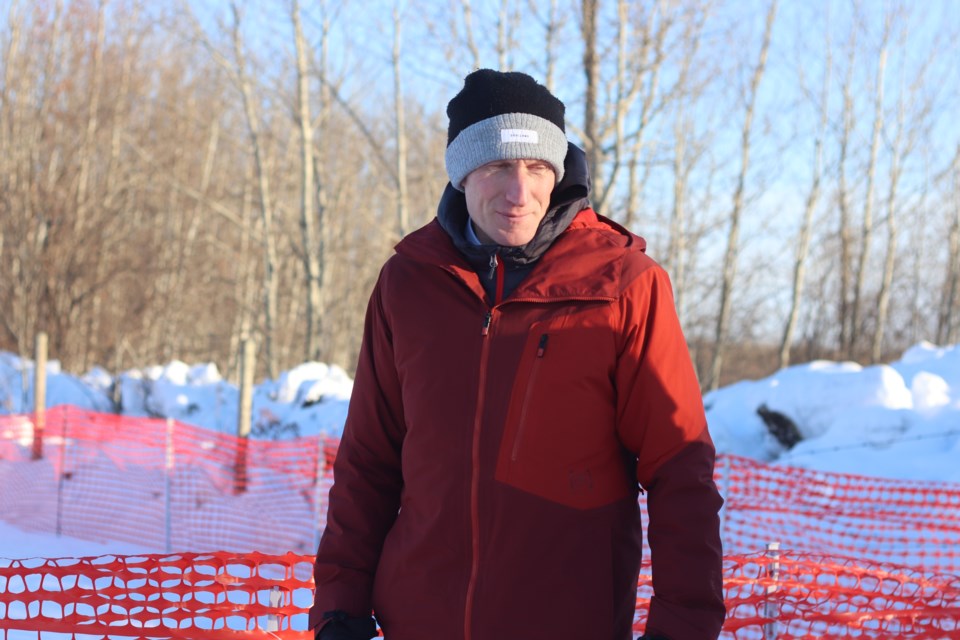SADDLE LAKE – Minister of Crown-Indigenous Relations Marc Miller stopped in Saddle Lake Cree Nation on Feb. 21 to hear from residential school survivors and community leaders.
The meeting with the minister took place at the Kihew Asiniy gymnasium. Chief of Saddle Lake Cree Nation Terry Cardinal spoke during the meeting, saying, “We must know our true history to begin re-learning who we really are... understanding the genealogical connection to each other and our forefathers... to stand proud.”
He also said the effects of residential schools continue to ripple among the people in Saddle Lake.
“We are faced with alcohol, drugs, and so many pains,” said the chief, adding, some of those issues are directly related to the residential school system.
“There’s a connection there.”
Cardinal then said the people of Saddle Lake will continue to work toward healing, “and hopefully move on so that our children won’t feel the same pain that we’re feeling.”
A shameful past of Canada’s history
During his speech, Miller acknowledged the harm caused by residential schools and expressed his commitment to work toward healing and reconciliation, calling the residential school system “racist in nature,” and a “shameful part” of Canada’s history. He believes it's important for politicians to “witness that shame.”
“Canadians need to have their consciences shocked and continually shocked,” and to be educated about the residential school system and learn from its survivors.
He also commended survivors for their courage to speak of their experiences – some for the first time, and others having shared their experiences many times in the past.
Also, “we often forget there are people that are still suffering in silence, and those people need to be honoured as well,” he said, noting, these “truths” are difficult to speak about.
The truth of the residential school system is a reminder of Canada’s “tragic past,” said Miller.
He also reiterated the importance of listening and engaging with First Nations communities, explaining that “we shouldn’t be deciding for you,” and “we’ve tried that in the past, with horrific consequences.”
Findings are not cosmetic
During his speech, Miller also thanked the Acimowim Opaspiw Society (AOS) for its continued investigations and for presenting its latest findings. “I can’t imagine the pain and trauma that you must be living with and also reliving.”
He said the findings will help guide the federal government’s efforts to “support your community as you heal from” direct trauma, intergenerational trauma, and the ongoing impact of the residential school system.
Miller said the findings are “not cosmetic in nature,” stressing “they actually find their way around the Cabinet table,” and will help develop policy going forward.
“We can’t develop the policy in Ottawa without hearing directly from you.”
After the meeting, Miller, alongside survivors, visited the site of a mass grave located at the Sacred Heart cemetery grounds in Saddle Lake.
Mass Grave site
A previous Lakeland This Week article reported that AOS plans to excavate the mass grave.
Leah Redcrow, AOS executive director, said in a statement to Lakeland This Week that recovery via excavation is an ongoing challenge for several reasons.
First, “We don’t know who can legally do it,” she said. The missing children also need to be identified, which involves tracing their living genealogy to gather DNA.
The children from affected First Nations also require a repatriation plan, and “families would have to voluntarily provide DNA.” The issue of who will be responsible for storing the DNA collected is also a challenge, according to Redcrow, due to privacy and Indigenous data sovereignty.
“Due to the lack of federal legislation and us being on reserve poses these challenges,” she explained. “Additionally, we need a federal medical examiner to do all this work for us because the provincial medical examiner hasn’t even responded to an email.”
AOS is still waiting to hear back from a medical examiner, said Redcrow.
“These are the biggest challenges overall because the families are going to want to know how the children died,” she said. Redcrow has members of her own family who died while attending the Saddle Lake residential school, and “my family wants to know how our missing children died if we find them.”
Excavation of the mass grave is crucial, according to Redcrow.
“This will bring closure for the incredible hurt and massive loss that we’re now feeling,” she said. “It’s comparable to having a child, who just disappears, knowing that there’s not even a record of them being buried and they are not listed as deceased.”
Truth
Minister Miller spoke with Lakeland This Week after his visit to the grave site, saying, “We heard very powerful testimonies.”
“To listen to their truth is very important for someone like me, and to get it back to Ottawa to work on this nationally. But it starts with listening to people on the ground,” said Miller.
He believes it is important to continue working on finding the truth and ensuring Canadians “knows this, as we work toward helping people heal and get some closure.”
What that healing, closure, and accountability looks like is not up for him or the Government of Canada to decide, but for the survivors to tell, said Miller.
“That’s something that we constantly have to remind ourselves in the government... the best reminders are by meeting people, talking to them, and continuing to hear their experiences.”



